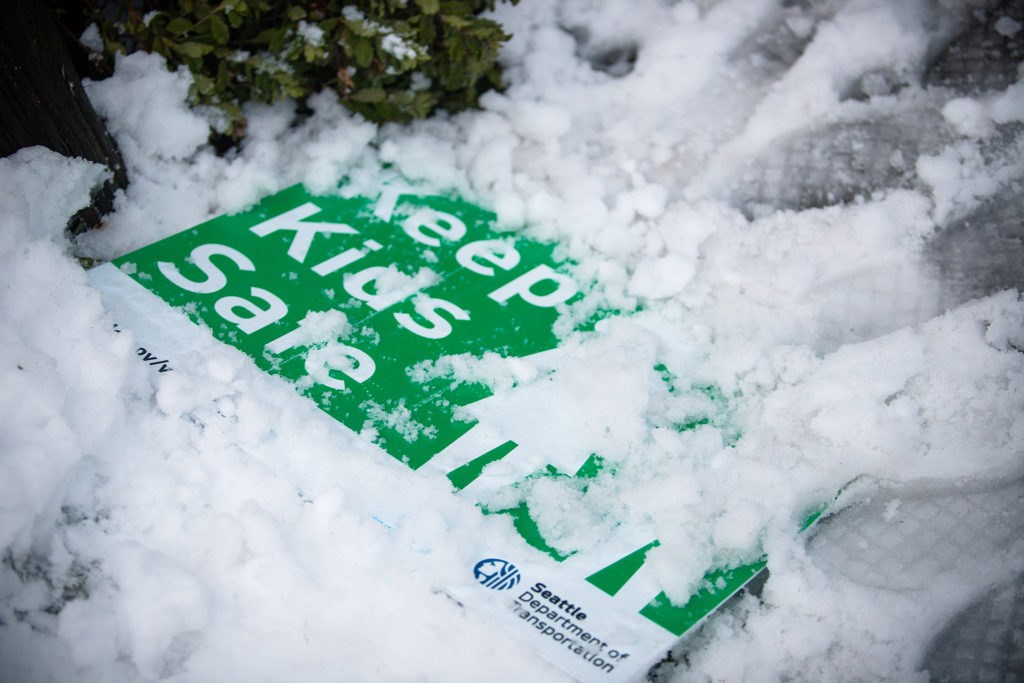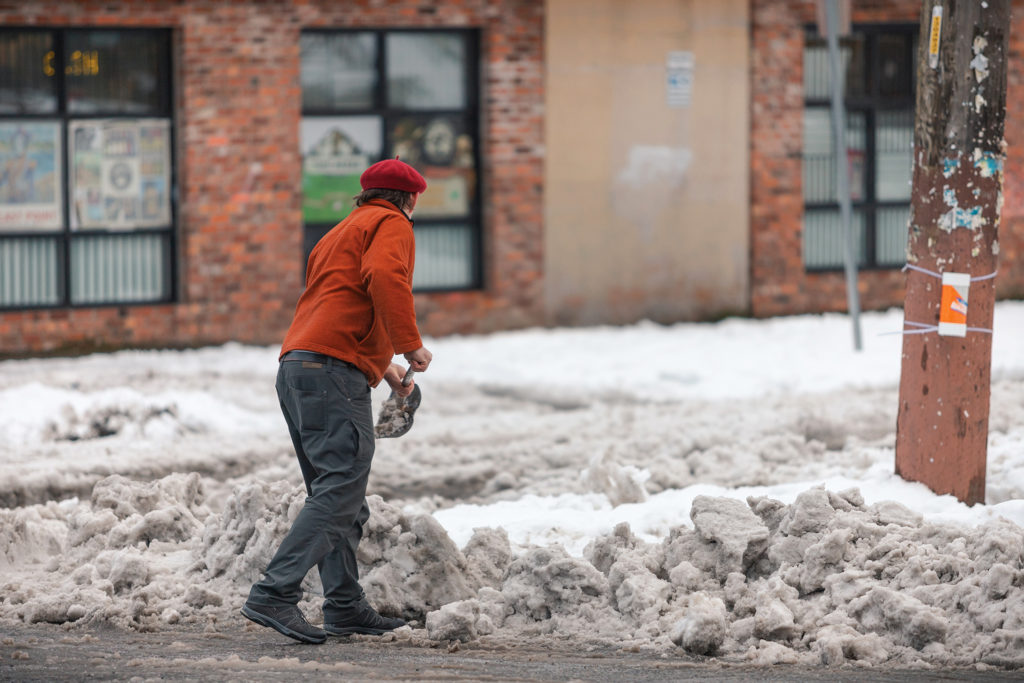The great Seattle snow storm of 2019 brought a fun break for students while it lasted, but the continuing ramifications of multiple snow days and campus closures has some students and faculty stressed and worried about how they will catch up.
Seattle normally has fairly mild weather—the occasional wind or rain storm, a little bit of snow here or there, but nothing like what Seattle saw last week. Friday Feb. 8 was the first day of the much-anticipated Snowmageddon that put the entire city on pause.

Capitol Hill neighborhood following Seattle’s record-breaking snow fall, photographed on Tuesday, February 12, 2019.
Seattleites rushed to nearly every grocery store across the city, stocking up on all the essentials for one of the largest snow events in Seattle history. Shelves were cleaned out, and grocery stores remained empty for days on end, due to trucks not being able to make deliveries.
Seattle University issued a school wide closure for Friday Feb. 8, starting at noon, and remained closed through Tuesday Feb. 12. Unsafe driving conditions combined with frozen campus sidewalks led to unexpected campus closures and left many employees unable to come to work. Other campus workers, such as groundskeeping, were working double-time, clearing sidewalks and campus parking lots in order to regain access to campus.
Despite the closures, Cherry Street Market and other on campus eatery employees still needed to work and provide food for those on campus and with meal plans. On the other hand, other campus employees weren’t so lucky. Learning Assistance Program employees, such as tutors, were not able to get their hours in and thus worried about being paid.
However, Wednesday afternoon student employees received an email alerting them that they would be paid for any shifts missed due to school closures.
“I missed about 13 hours due to the snow, but thankfully Student Financial Services decided to pay students for the hours we were scheduled to work during the days the university was closed,” Language Tutor Emi Montenegro said. “Without this, it would have been difficult to pay for rent and I would have had to go into my savings.”
Maddie Twight, nursing major, and Katryna Cutler, sports and exercise science major, also experienced some unexpected challenges due to the winter storm.
“School has been canceled, which hasn’t been the end of the world, but now that we are on day three it’s starting to be problematic, especially as we get closer to finals because my classes are on Mondays and Fridays, so I am over a week behind in some classes,” Twight said.

Capitol Hill neighborhood following Seattle’s record-breaking snow fall, photographed on Tuesday, February 12, 2019.
Cutler also expressed worries about missed coursework due to the university closures.
“A lot of my professors have said since we’ve missed days we have to learn it ourselves, which makes me more nervous for exams and also causes me to change my schedule around to fit in extra studying on top of work and my commute,” Cutler said.
Montenegro said that the Learning Assistance Programs hasn’t seen an increase in student sign in, but that doesn’t mean that students aren’t scrambling to make up for lost time.
“I haven’t seen an increase in my drop-in hours attendance nor an increase in the amount of students I tutor, but I do think missing this much class has a significant impact— especially for language classes which are fast-paced and often include concepts that are difficult to self- teach,” Montenegro said.
In addition to Cutler having to spend extra time learning materials she could not go over in class, she also experienced additional stress due to her commute to and from school during the last bit of the storm.
“My commute has been trickier because all the snow has forced me to get up earlier and figure out if its safe or not to get to classes,” she said. “It’s something I haven’t been used to dealing with, and just little stuff like that where I have to figure out a whole new schedule just to get to class.”
Instructor of Philosophy Eric Severson has also experienced some difficulties during the recent storm. Severson commutes to campus by bicycle from Kenmore and almost wasn’t able to make it in last week.
“I tried to make it on bicycle last week, but had to give up, stash my bike in some bushes and find a bus. The snow means much longer commute times, and it helps a lot to have significant warning about closures and delays,” he said. “It’s particularly helpful when a delayed-opening message is definitive, and not changed a few hours later.”
Severson also shared that campus closures have an especially difficult effect on how he schedules childcare for his children.
“My biggest issue with the way the storm has been managed by Seattle U, and my children’s school district, has occurred when the delay/cancellation has been changed after being first declared,” he said. “When the late-start is changed to a closure, I have to start over with childcare arrangements. The amount of extra work this creates is significant.”
As Seattle settles post-storm, things are rapidly beginning to normalize again: students are continuing their studies, and faculty preparing forfinals.
The editor may be reached at
news@su-spectator.com







